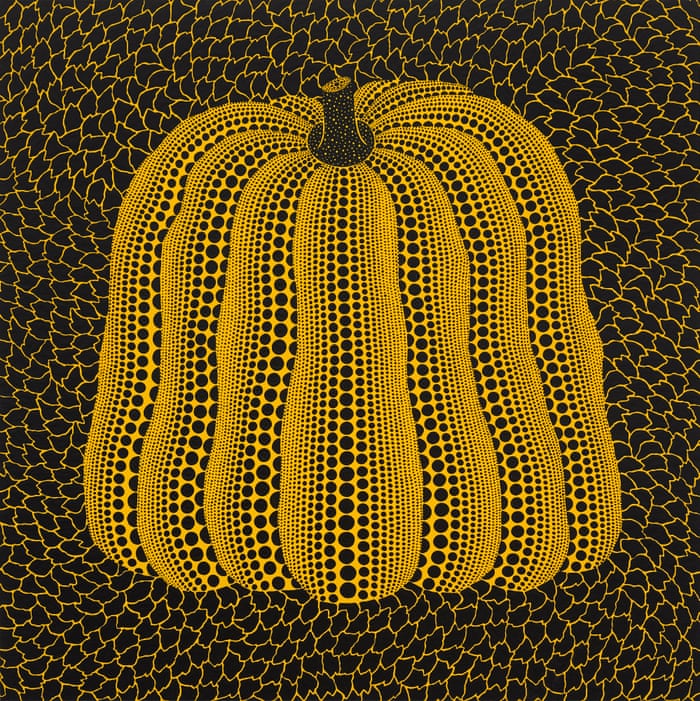Takashi Murakami
Takashi Murakami is a Japanese contemporary artist. He is known for his sculptures and paintings, although he blurs the lines of high and low art. This is because he also creates fashion, merchandising, and animation. Recently, He has been involved with creating Billi Eilish's "You should see me in a Crown" video clip and merchandising among his own line of NFT.
He uses Japanese traditional art (most prominent ukiyo-e) with the postwar culture and society. He believed Japan had become too influenced by Western trends, and most of his work started as satire and social criticism. Most of his early work was not well received in Japan.
One of his most famous (and copied) designs is the Murakami Flower. The happy face, and the colors, can be interpreted as a harmless, happy, bubbly flower. But He revealed in an article published by the New York Times that it was an expression of the trauma experienced by the Japanese residents after the Nuclear Bombing of Hiroshima and Nagasaki. Murakami wanted to shine a light on the catastrophe and bring attention to the effects that still have in Japan today.
Takashi Murakami's flower, first seen in 1995
]Yayoi Kusama
Yayoi Kusama is a contemporary artist that began her career as an abstract impressionist in the 70s when she moved to New York to form part of the avant-garde community with artists like Warhol. Her work has significantly influenced pop art, minimalism, and feminist art. She recently collaborated with Luis Vuitton on an installation display and textile design.
She has worked with sculpture, painting, performance, and installations. Her themes are psychedelia by repetition, which is most known by her polka dot patterns. These pieces were made at first as a form of therapy; creating repeating patterns was a form to relax and calm her. \
Like Murakami, Her artwork is very flat and geometric, with curves and circles being the predominant shape in her work.
Yoshitomo Nara
Yoshito Nara is a Japanese painter that graduated with his BFA in 1985, and since then, his work has been exhibited worldwide.
His most iconic paintings are "big-headed girls" with familiar big piercing eyes, influenced by manga and Walt Disney animation. This girl might have childish expressions, but they resonate with adult feelings. In addition, they embody Kawaii and dark humor since they are often portrayed with explicit cultural references. This can be attributed to Nara's upbringing after WWII and the overflow of Western pop culture into the country.
The children in his work are often portrayed bearing weapons like knives and saws. Their big eyes are accusatory, irritated by what we can only guess comes from sleepy-eye or pure hate. Nara has stated that he does not see the child children as aggressors. They are holding tiny childish toys, surrounded by more significant adults with more dangerous weapons. His works still intrigue people worldwide and raise questions about innocence and childhood.
Yoshitomo Nara, Blankey, 2012, acrylic on canvas, 76 3/8 x 63 3/4"
Sources:
L, Owity. “Takashi Murakami Flower - What Is It?” OWITY, OWITY, 28 Aug. 2021, https://owity.com/blogs/owity-blog/takashi-murakami-flower.
“Takashi Murakami.” YouTube, YouTube, 9 June 2017, https://www.youtube.com/watch?v=-YPOWBQAd1M.
“Yayoi Kusama's Pumpkin: Dot to Dot Veggie or Metaphor for Obliteration?” The Guardian, Guardian News and Media, 26 Oct. 2018, https://www.theguardian.com/artanddesign/2018/oct/26/yayoi-kusama-pumpkin-dot-to-dot.
“Yoshitomo Nara.” Pace Gallery, https://www.pacegallery.com/artists/yoshitomo-nara/.



Hello Marina, I appreciate that you chose to focus on contemporary Japanese art for your exhibit. I had not realized that Takashi Murakami's flower, which I had seen before, was a commentary on such a dark topic. I chose to discuss Puella Magi Madoka Magica for my post, and I find it interesting how two such bright, lively, and cheerful seaming images can mask such horrific tales. While I do like Yayoi Kusama’s Pumpkin due to its simplicity, the contrast of black and gold, and the fact that it is by a female artist who promotes feminist ideals in her work, like The Gorilla Girls, I cannot shake the feeling that it looks like something a would see in the home décor section at any given chain store. I appreciate Yoshitomo Nara, Blankey. I can definitely see the manga and Disney influence on his art. The child in Blankey specifically reminds me of Ponyo when she is stuck mid-transformation from a fish to a human. Finally, focusing on more modern Japanese art was an excellent choice for a non-wester exhibit. I think contemporary art from other countries can often get overlooked, so picking works by these artists exposed me to unique art that I do not traditionally see, which was very refreshing.
ReplyDelete